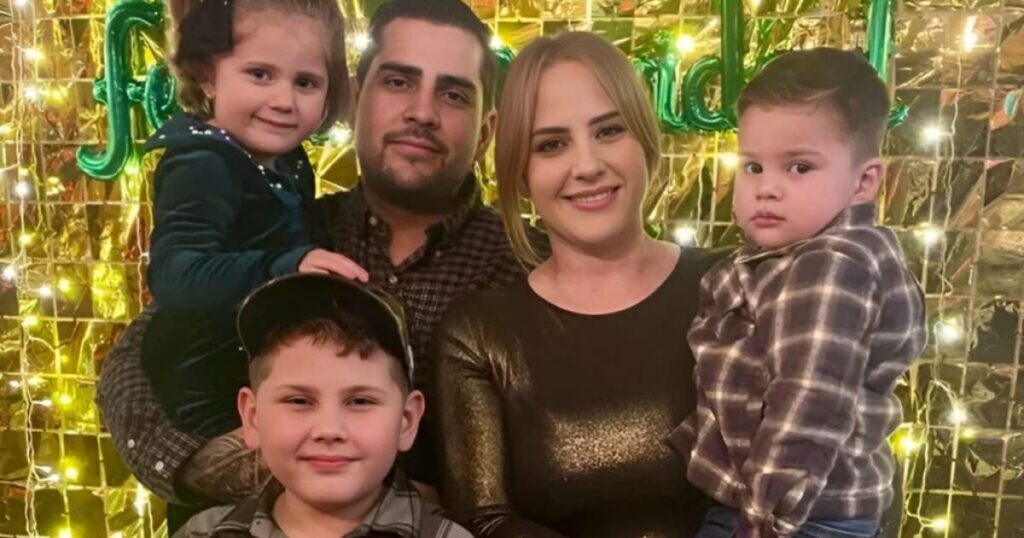Emily Mae Gladstein’s life burned bright but tragically brief. Born September 30, 1993, in New York City, she dedicated every waking moment to fighting animal cruelty. Her passion for animal welfare wasn’t just a hobby—it became her life’s mission. When she passed away on June 9, 2022, in Keystone Heights, Florida, the animal rights movement lost a fierce advocate.
At just 27 years old, Emily Gladstein had already touched countless lives. Her work opposing factory farming, animal testing, and the fur trade inspired activists nationwide. Friends remember her infectious enthusiasm for theater and arts, which she skillfully wove into her advocacy work. This article explores every aspect of Emily Gladstein’s biography, from her childhood in Huntington, New York, to her final days.
Michael and Marilyn Gladstein raised a daughter who believed art could change the world. Emily’s untimely death left her parents devastated, yet her legacy continues inspiring animal advocates today. We’ll examine her life story, career highlights, the mystery surrounding her death, and the lasting impact she made on the animal advocacy community.
Profile Summary – Quick Facts About Emily Gladstein
| Real Name | Emily Gladstein |
| Date of Birth | 30 September 1994 |
| Birthplace | New York City |
| Height | 5’10” (1.78 m) |
| Age | Was 27 years old |
| Educational Status | Graduate |
| Father | Michael Gladstein |
| Mother | Marilyn Gladstein |
| Religion | Christianity |
| Brother | Not Known |
| Net Worth | $2 Million – $3 Million (approx) |
| Nationality | American |
| Real Name | Emily Gladstein |
| Date of Birth | 30 September 1994 |
| Birthplace | New York City |
| Height | 5’10” (1.78 m) |
| Age | Was 27 years old |
This profile summary captures the essential facts about Emily Gladstein’s life. She stood tall at 5’10” and carried herself with confidence that matched her convictions. Her American nationality and Christian upbringing in Huntington, New York, shaped her compassionate worldview.
Emily Gladstein’s biography reveals someone who valued privacy regarding personal matters. She kept romantic relationships out of the spotlight entirely. Her focus remained laser-sharp on animal welfare rather than building a public persona around her personal life.
Emily Gladstein Age – How Old Was She?
Emily Gladstein was 27 years old when she died on June 9, 2022. Some sources mistakenly list her age as 28, but official records confirm she hadn’t yet reached her 29th birthday. Born in 1993, she belonged to the millennial generation that grew up witnessing increased awareness about animal rights.
Her youth made her accomplishments even more remarkable. By 27, most people are still figuring out their career paths. Emily had already established herself as a respected voice in the animal welfare community. She participated in rescue missions, educated the public about industrial animal exploitation, and collaborated with established activists twice her age.
The tragedy of Emily Gladstein’s death at such a young age devastated everyone who knew her. She had decades of advocacy work ahead of her. Friends often wonder what more she could’ve accomplished with another 50 years. Her posthumous celebration on what would’ve been her 29th birthday—September 30, 2022—reminded everyone that age is just a number when measuring impact.
Related post: Brawley Nolte Net Worth, Age, Biography: Inside Nick Nolte’s Son’s Hollywood Journey
Early Life and Family – The Gladstein Household

Growing Up in New York City
Emily Mae Gladstein entered the world on September 30, 1993, in bustling New York City. Her childhood in Huntington, New York, provided the perfect environment for developing her artistic sensibilities. The Gladstein family home buzzed with creativity, compassion, and intellectual curiosity. Early signs of Emily’s empathy toward animals emerged when she was still in elementary school.
Her parents noticed she’d rescue injured birds and nurse them back to health. She cried when she learned where hamburgers came from. These weren’t phases—they were foundational moments shaping her future advocacy. Growing up near NYC exposed her to diverse perspectives and progressive thinking about animal rights.
The New York native absorbed her surroundings like a sponge. She attended local theater productions, visited museums, and developed the artistic passion that later complemented her activism. Her upbringing emphasized education, kindness, and standing up for those without voices. These values became her North Star.
Emily Gladstein’s Parents – Michael and Marilyn Gladstein
Michael Gladstein and Marilyn Gladstein provided unwavering support for their daughter’s unconventional path. Some sources identify Dr. Michael Gladstein as a dermatologist, though details about his medical practice remain sparse. What’s certain is that both parents encouraged Emily’s passion for animals rather than pushing her toward traditional careers.
Marilyn Gladstein instilled artistic appreciation in Emily from birth. She took her daughter to Studio Theatre performances and encouraged creative expression. Michael and Marilyn’s parenting style balanced structure with freedom, allowing Emily to explore her interests fully. They attended her memorial at the Bayway Art Center, heartbroken but proud of her legacy.
The Gladstein family faced unimaginable grief after losing Emily. Her grandmother, Roslyn Guttenberg Gladstein, also mourned deeply. The family’s decision to keep certain details private—including specific circumstances around Emily’s death—reflects their need for space during this tragedy. They’ve handled their loss with dignity while watching Emily’s legacy continue inspiring others.
Siblings and Extended Family
Information about Emily’s siblings remains deliberately private. One source mentions a brother, but the Gladstein family hasn’t publicly shared details about other children. This privacy choice deserves respect. Losing a daughter or sister creates trauma that families process differently.
Extended family members likely supported Michael and Marilyn through their darkest days. Huntington, New York has a close-knit community where the Gladstein name carried respect. Relatives probably attended the celebration of life events honoring Emily’s memory.
The family’s close-knit nature meant Emily’s death rippled through their entire network. Cousins, aunts, uncles—everyone felt the void she left. Yet they’ve chosen to grieve privately rather than sharing family dynamics publicly. This boundary protects their healing process while still allowing Emily’s public advocacy legacy to shine.
Educational Background – Emily’s Academic Journey
Emily Gladstein completed her education as a graduate, though specifics about her schooling remain elusive. She likely attended schools in Huntington, New York, or nearby areas. Her educational background probably included strong arts programs that nurtured her theatrical interests. She never publicized which universities she attended or what degrees she earned.
This privacy around academics wasn’t secretive—it simply reflected her priorities. Emily cared more about taking action than building impressive résumés. She possessed the intelligence and communication skills that suggested quality education. Her ability to articulate complex issues around animal testing and factory farming demonstrated critical thinking abilities.
Her education served as a foundation for advocacy rather than an end goal. Many activists pursue degrees in environmental science, ethics, or communications. Emily might’ve studied any of these fields. What mattered most was how she applied her knowledge to create real change for animals. Her volunteer work became her true education in compassion and activism.
Career – Emily Gladstein’s Professional Path
Finding Her Calling in Animal Welfare
Emily Gladstein’s career path diverged from conventional routes early on. While peers chased corporate jobs or advanced degrees, she pursued something money couldn’t buy—meaningful impact. Her passion for theater and arts initially suggested she might work in entertainment. Instead, she channeled that creativity into making animal advocacy more accessible and engaging.
The transition happened organically. Emily couldn’t ignore what she learned about industrial animal exploitation. Reading about factory farming conditions kept her awake at night. Learning about animal testing procedures in laboratories broke her heart. She decided that a comfortable career meant nothing if she wasn’t fighting for the voiceless.
Her early career involved volunteering with local animal rescue operations. She networked within the animal welfare community, learning from seasoned activists. Emily discovered her voice through public speaking at awareness events. She combined her artistic background with advocacy, creating compelling presentations that changed minds. This became her life’s work—education through emotional connection.
Major Accomplishments and Impact
Emily’s accomplishments didn’t come with certificates or awards. They came through animals saved and minds changed. She participated in numerous rescue missions, pulling creatures from abusive situations and placing them in safe sanctuaries. Each rescue represented hours of planning, coordination, and often physical danger.
Her educational initiatives reached thousands. Emily spoke at schools, community centers, and activist gatherings. She explained complex topics like supply chain ethics and environmental impacts of animal agriculture in ways everyone understood. Her theater background made her presentations memorable and moving rather than preachy.
Recognition from peers meant everything to Emily. Veteran activists respected her dedication and innovative approaches. She didn’t just protest—she offered solutions. She didn’t just criticize—she educated. Her leadership within the movement emerged naturally as others recognized her effectiveness. Young activists looked to her as a role model despite her own youth.
Personal Life and Relationships – Behind the Activism
Emily Gladstein’s Private Nature
Emily Gladstein’s personal life remained remarkably private throughout her years of public activism. No evidence suggests she dated anyone seriously or had romantic relationships that reached public knowledge. She appeared single and unmarried at the time of her death. This wasn’t unusual for someone consumed by demanding advocacy work.
Her privacy extended beyond romance. Emily rarely shared details about daily routines, hobbies outside activism, or personal struggles. She maintained firm boundaries between her public mission and private existence. This protected her mental health and kept focus on animals rather than her personal story.
Friends describe someone who poured everything into her cause. Her relationships centered around shared values and mission alignment. She didn’t seek attention or fame—she sought results. This authenticity made her beloved within activist circles. People trusted her because she never made it about herself.
Friendships and Community Connections
Despite keeping romance private, Emily built strong bonds within activist communities. Her friends and loved ones became her chosen family. These weren’t superficial connections—they were forged through shared risks, late-night rescue missions, and the emotional toll of witnessing animal suffering together.
Her infectious enthusiasm for theater and arts enriched these friendships. Emily brought levity to dark work. She’d quote Shakespeare during strategy meetings or suggest celebrating victories with impromptu performances. Her creativity prevented burnout among her circle. She understood that maintaining joy was essential for sustainable activism.
Community involvement extended beyond animal welfare. Emily supported local arts programs and believed cultural engagement strengthened social movements. She attended theater productions at Studio Theatre and other venues. These interests made her well-rounded and relatable. Her friends remember someone who laughed easily, hugged warmly, and never stopped believing change was possible.
Emily Gladstein’s Commitment to Animal Advocacy
The Spark That Ignited Her Passion
What transforms someone into a passionate animal rights activist? For Emily, it wasn’t one moment but accumulated realizations. Learning about cruelty to animals in various industries shattered any illusions about ethical treatment. She couldn’t unknow what she’d discovered. Her compassion demanded action, not just sympathy.
Factory farming statistics horrified her. Billions of sentient creatures living in conditions too cruel to describe openly. Animal testing protocols that tortured beings for cosmetics and household products. The fur trade killing animals through brutal trapping methods. Each industry represented systematic violence that society had normalized. Emily refused to accept this as inevitable.
Her personal philosophy centered on interconnection. She believed humans couldn’t achieve true ethics while enslaving other species. Her Christian upbringing emphasized stewardship of creation, which she interpreted as protecting rather than exploiting animals. This spiritual dimension fueled her dedication when exhaustion threatened to overwhelm her.
Causes She Championed
Emily’s opposition to factory farming struck at the heart of animal agriculture’s cruelest practices. She educated people about confined animal feeding operations where creatures never saw sunlight or felt grass. She shared footage from undercover investigations that revealed standard industry practices—not isolated incidents of abuse. Her messaging focused on systemic change rather than individual guilt.
Fighting animal testing became another cornerstone of her work. Emily collaborated with organizations pushing for alternative testing methods. She highlighted the scientific limitations of animal models while emphasizing ethical concerns. Her presentations explained how modern technology could replace most animal experiments. She made the case for cruelty-free products without sounding self-righteous.
Her anti-fur movement involvement challenged luxury fashion’s relationship with animal suffering. Emily protested outside retailers selling fur and educated shoppers about trapping methods. She promoted synthetic alternatives and designers embracing compassionate fashion. Her approach combined direct action with consumer education, targeting both supply and demand sides of the equation.
Rescue Missions and Direct Action
Emily didn’t just talk about animal rescue—she got her hands dirty. She participated in operations pulling animals from hoarding situations, neglectful owners, and illegal breeding facilities. These missions required courage, physical stamina, and emotional resilience. She witnessed conditions that gave her nightmares yet returned repeatedly because animals needed help.
Providing sanctuary for abused animals extended her commitment beyond rescue. Emily worked with shelters and sanctuaries ensuring creatures found permanent safety. She fundraised, volunteered for daily care, and helped match animals with appropriate homes. Her volunteerism demonstrated that advocacy meant lifelong responsibility, not just dramatic rescues.
Specific rescue stories remain largely untold, respecting operational security and animal privacy. What’s known is that Emily’s hands-on approach earned respect from seasoned rescuers. She never asked others to do work she wouldn’t do herself. This integrity defined her activism and inspired others to match her commitment level.
Career in Animal Activism – Emily’s Professional Impact
Organizations and Collaborations
While specific animal advocacy organizations Emily worked with aren’t publicly documented, she clearly collaborated with established groups. The animal welfare community operates through networks of nonprofits, grassroots collectives, and individual activists. Emily connected these dots, building coalitions that amplified impact beyond what any single group could achieve.
Her partnerships leveraged different strengths. She’d work with legal organizations on policy changes while simultaneously supporting direct action groups conducting investigations. She understood that effective movements need multiple strategies working simultaneously. Her ability to bridge different activist philosophies made her invaluable.
Building networks came naturally to Emily. She attended conferences, participated in online forums, and maintained relationships across geographic boundaries. When someone needed expertise on a particular issue, they’d call Emily. She became a connector—someone who knew who to contact for any animal welfare challenge. This role required trust, which she earned through consistent dedication.
Methods and Approach to Advocacy
Emily’s advocacy style balanced education with action. She never lectured people into feeling guilty. Instead, she created emotional connections that made audiences care. Her theater background taught her that stories move people more than statistics. She shared narratives of individual animals who suffered and survived, making abstract issues concrete.
Her communication strategies adapted to different audiences. Speaking to students required different approaches than addressing policymakers. Emily researched her audiences, understanding their concerns and values before crafting messages. This preparation made her presentations land with maximum impact. She answered questions thoughtfully rather than defensively.
Inspiring others became her greatest skill. Emily didn’t recruit through guilt or shame. She showed people that compassion toward animals enhanced their own humanity. She celebrated small steps rather than demanding instant perfection. This positive approach built sustainable commitment among new activists rather than burning them out quickly.
Legacy in the Animal Rights Movement
The respect earned from peers during Emily’s lifetime has only grown since her death. Activists who worked with her speak reverently about her unwavering efforts. They describe someone who never compromised her values yet remained approachable and kind. She proved that effective activism doesn’t require aggression or self-righteousness.
Her lasting impact manifests in activists who cite her as inspiration. Young people entering animal welfare work often discover Emily’s story and feel encouraged. If she accomplished so much by 27, they reason, they can make meaningful contributions too. Her example democratizes activism—showing it doesn’t require special credentials or resources, just genuine dedication.
Others carrying forward her mission keep Emily’s spirit alive. Some work on causes she championed directly. Others apply her methods to different issues, recognizing that her approach to creating change transcends specific movements. The Bayway Art Center memorial celebrating her life wasn’t just about looking backward—it was about recommitting to the work she started.
Emily Gladstein’s Untimely Death – A Tragic Loss
The Shocking News from June 2022
June 9, 2022, brought devastating news to the animal welfare community. Emily Gladstein had died in Keystone Heights, Florida, at just 27 years old. The announcement stunned everyone who knew her. She’d been young, passionate, and seemingly had decades of advocacy ahead. Her untimely death felt impossibly unfair to creatures who needed her voice.
Initial reports provided few details beyond the basic facts. Emily passed away, her family was grieving, and the movement had lost an irreplaceable advocate. Friends scrambled to understand what happened. Social media filled with tributes from activists worldwide who’d worked with or been inspired by her. The community reaction demonstrated how widely her influence had spread.
Outpouring of grief from activists revealed Emily’s true impact. People shared stories of how she’d mentored them, encouraged them during difficult campaigns, or simply shown kindness when they needed it. The tributes painted a picture of someone who touched individual lives while pursuing systemic change. Her death left a void that couldn’t easily be filled.
Location and Circumstances
Emily Gladstein died in Keystone Heights, Florida—a small town far from her New York City roots. Why she was there remains unclear. She might’ve been visiting family, participating in a rescue operation, or simply taking a break. The distance from home added surreal quality to the tragedy for those who knew her primarily through New York activism circles.
Details about circumstances surrounding her presence in Florida haven’t been publicly shared. The Gladstein family’s decision to maintain privacy extends to these final days of her life. Some mysteries don’t require solving. What matters is that Emily died surrounded by whatever peace or people comforted her final moments.
Natural causes was listed as the reason, but this broad term raises more questions than it answers. At 27, “natural causes” seems impossibly premature. Yet families have every right to keep medical information private. Speculation serves no purpose except satisfying curiosity at the expense of grieving parents’ dignity.
Cause of Death and Obituary – Remembering Emily
What We Know About Emily Gladstein’s Death
Emily Gladstein’s cause of death remains officially listed as natural causes. This phrase typically indicates death wasn’t from external factors like accidents or violence. At her young age, natural causes might suggest undiagnosed medical conditions, sudden cardiac events, or other health crises. The Gladstein family hasn’t elaborated beyond this general statement.
The mystery surrounding her death has sparked understandable curiosity. People want to understand how someone so young and seemingly healthy could die suddenly. However, medical privacy protections exist for good reasons. Families shouldn’t have to share intimate health details to satisfy public curiosity, even when the deceased was a public figure.
Limited information frustrates those seeking closure through understanding. Yet Emily’s legacy doesn’t depend on knowing exact medical details of her final moments. What matters is how she lived, not precisely how she died. The family’s privacy choices deserve respect rather than pressure for disclosure.
Memorial Services and Celebrations of Life
The 2022 memorial at Bayway Art Center honored Emily’s life beautifully. Studio Theatre’s home venue, the Bayway Art Centre, provided the perfect setting. Emily had loved theater, making this location deeply meaningful. Friends, family, and fellow activists gathered to share memories, tears, and laughter celebrating someone irreplaceable.
Attendees spoke about Emily’s inspiring legacy and tireless animal advocacy. They shared rescue mission stories, funny moments from campaigns, and lessons she’d taught them. The memorial captured both grief over her loss and gratitude for her life. It wasn’t just mourning—it was celebration of someone who’d lived authentically and purposefully.
Her posthumous 29th birthday celebration on September 30, 2022, provided another opportunity for remembrance. Friends marked the day she would’ve turned 29 by continuing her work. Some participated in rescues, others made donations to animal welfare organizations, and many simply reflected on her impact. This ongoing commemoration transforms grief into action.
Emily Gladstein Obituary Highlights
Emily Gladstein’s obituary emphasized her passionate commitment to fighting animal cruelty. It described her work opposing factory farming, animal testing, and the fur trade. The obituary highlighted her rescue missions and educational outreach. It painted a picture of someone who lived her values completely.
Media coverage of her passing remained relatively limited to activist circles and local New York outlets. Emily hadn’t sought mainstream fame, so national media didn’t widely report her death. Yet within animal rights communities, tributes flooded social media and organizational newsletters. Her influence rippled further than geography might suggest.
Quotes from loved ones (where available) emphasized her compassion, dedication, and infectious enthusiasm. They described someone who made activism joyful rather than grim. She found hope even in dark situations and helped others maintain their commitment when discouragement threatened. These personal testimonials reveal character more than any accomplishment list could.
Impact of Her Death on the Community
The animal welfare community’s response demonstrated how interconnected this movement has become. Emily’s death was mourned from California to New York, from Florida to Washington. Activists who’d never met her in person still felt the loss because they’d been inspired by her example or benefited from her work.
Tributes from fellow activists flooded social media for weeks. People changed their profile pictures to images of Emily or animals she’d helped rescue. They pledged to work harder in her honor. Some established informal memorial funds supporting causes she’d championed. These responses transformed personal grief into collective commitment.
Ongoing campaigns she’d participated in continued with renewed dedication. Activists invoked her memory when feeling discouraged, asking themselves what Emily would’ve done. Her death paradoxically strengthened the movement by reminding people of life’s fragility and the urgency of their work. Every animal saved represents the continuing inspiration Emily provides.
Net Worth – Emily Gladstein’s Financial Legacy
Estimated Wealth at Time of Death
Emily Gladstein’s net worth varies wildly depending on sources. Some reports estimate $400,000, while others claim $2 million to $3 million. These significant discrepancies likely stem from confusion about inheritance, family assets, or simple inaccuracy in online reporting. Most activists don’t accumulate substantial wealth given nonprofit sector salaries.
The wide range of estimates suggests speculation rather than verified information. Emily lived modestly, focusing energy on advocacy rather than wealth accumulation. She likely earned income through nonprofit work, speaking engagements, or family support. Her financial situation probably resembled most young activists—comfortable enough to dedicate time to unpaid work but not wealthy.
Understanding her actual net worth matters less than recognizing how she used whatever resources she had. Emily invested time, energy, and money into creating change. Her true wealth wasn’t measured in bank accounts but in lives touched and animals saved. This perspective aligns with values she lived by.
Financial Priorities and Values
Emily’s financial decisions reflected her priorities completely. Rather than pursuing high-paying careers, she chose meaningful work regardless of salary. She likely lived frugally, directing disposable income toward animal welfare causes rather than luxury items. Her lifestyle matched her messaging—she walked the walk rather than just talking.
Money invested in animal welfare represented her most important financial commitments. She probably donated to sanctuaries, rescue organizations, and advocacy groups. She might’ve funded supplies for rescue missions from personal funds when organizational budgets fell short. These investments created returns measured in suffering prevented rather than dollars earned.
The legacy of her estate (if known) would likely reflect these same values. She probably designated any assets toward continuing the work she’d started. Whether through formal bequests to organizations or informal family commitments to honor her memory, Emily’s financial legacy likely serves animals even after her death.
Conclusion – Emily Gladstein’s Enduring Legacy
Emily Mae Gladstein lived 27 years that mattered more than many people’s decades. Born September 30, 1993, she discovered her calling early and pursued it relentlessly. Her biography tells the story of someone who refused to accept injustice simply because it was normalized. She saw suffering and demanded better from humanity.
Her parents, Michael and Marilyn Gladstein, raised a daughter who changed the world in measurable ways. Their loss is unimaginable, yet they can take comfort knowing Emily’s impact continues growing. Every activist she inspired, every animal saved through work she started, every mind changed by methods she pioneered—these represent her living legacy.
Emily Gladstein’s death at 27 reminds us that time matters less than impact. She accomplished more in her brief life than many do in twice that span. Her work against factory farming, animal testing, and the fur trade advanced causes that will benefit creatures for generations. The animal welfare community remains stronger because she was part of it.








